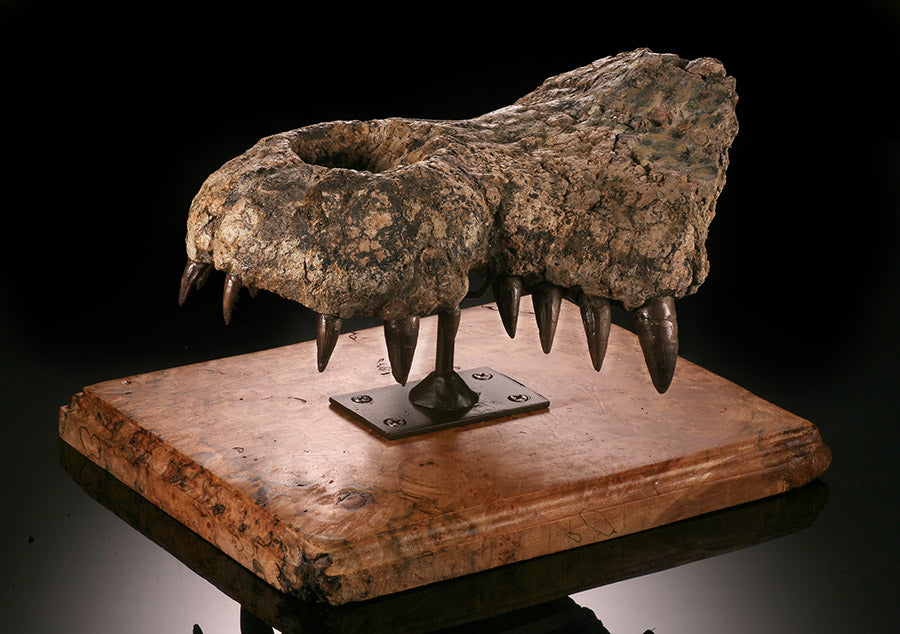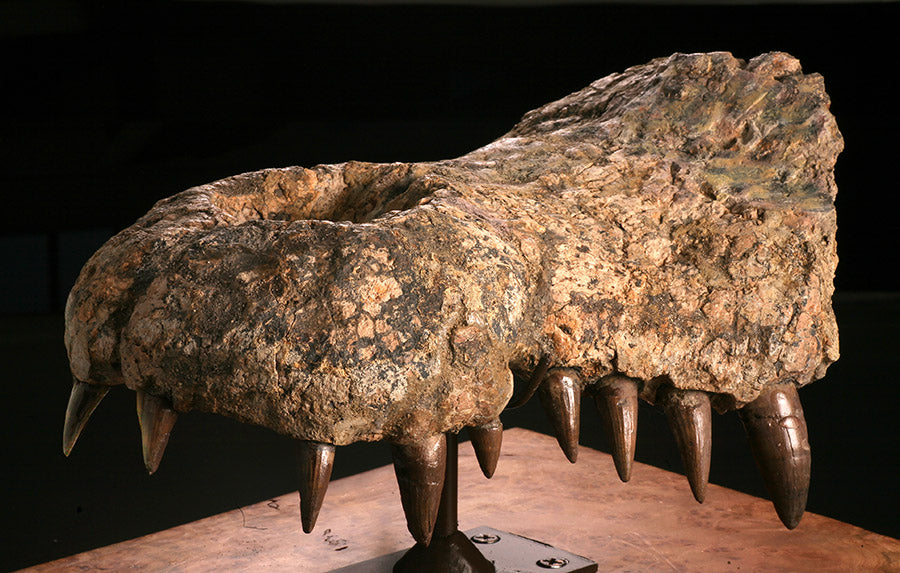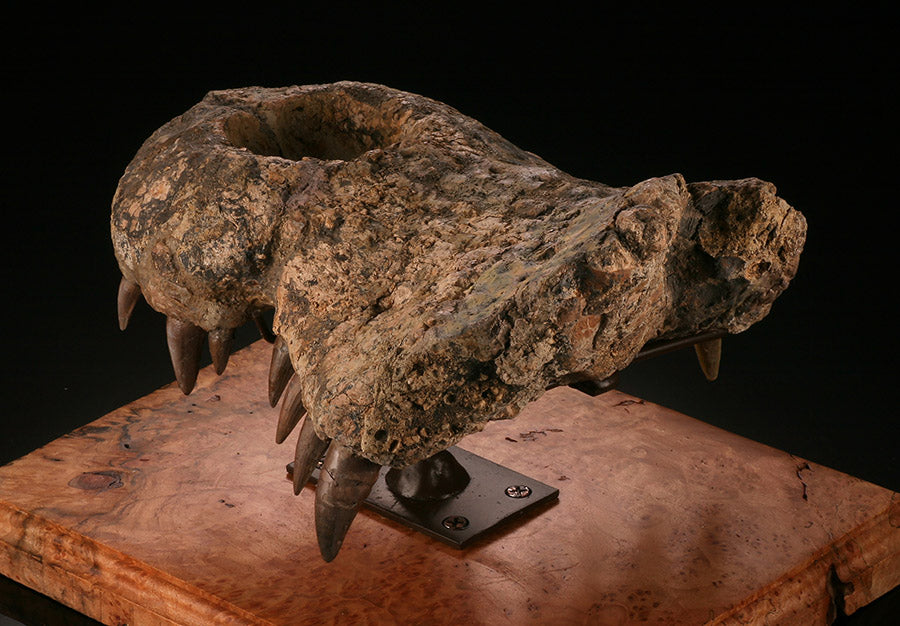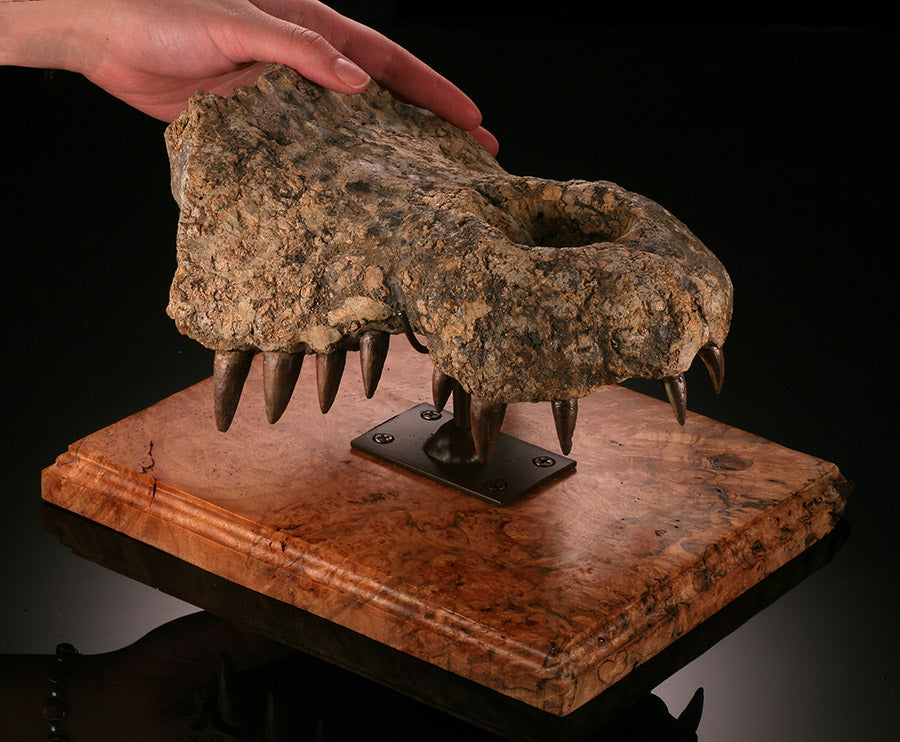





More Information
With their prehistoric look, giant jaws with more than a 3500 pound bite force and its totally scaled bodies, one might think todays crocodiles are a perfect example of 'a living fossil'. But, that's not correct. Prehistoric crocodiles have change significantly over the millions of years of their existence. Fossil studies show their skeletal anatomy was once quite different than today's modern crocodiles. It's even theorized that ancient crocodiles were much more active and might have been warm blooded.
The Homo Erectus fossil beds of Kali Gedeh (Java), Indonesia has been known for over a century and has been well studied. Outside of Europe, this area contains the first known fossilized remains of early man (Homo Erectus), who relied on living by riverbeds for their survival. But also, in and alongside the river beds lived a gigantic crocodile, with jaws measuring 3 feet in length and an estimated overall body length of 20 feet.
There is no doubt that early man in this region was constantly being attacked and devoured by these gigantic creatures. Even so, although they feared these crocodiles, the tribespeople simultaneously revered and admired them, considering them to be deities.







